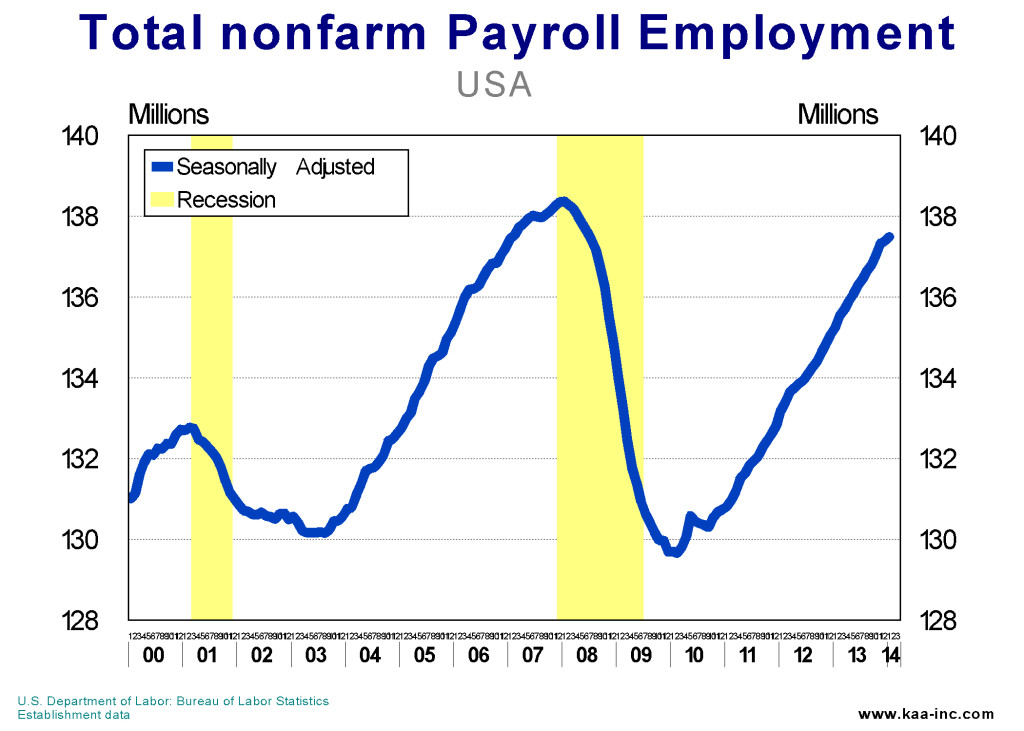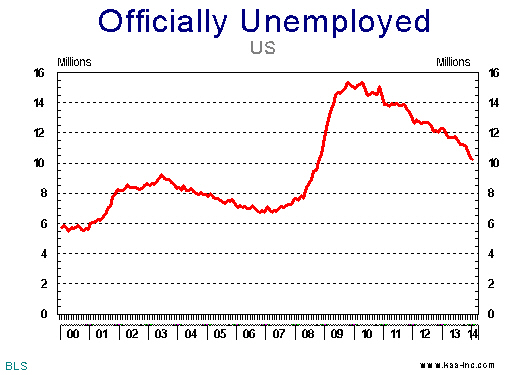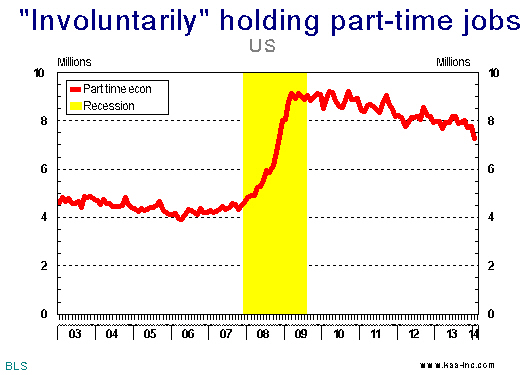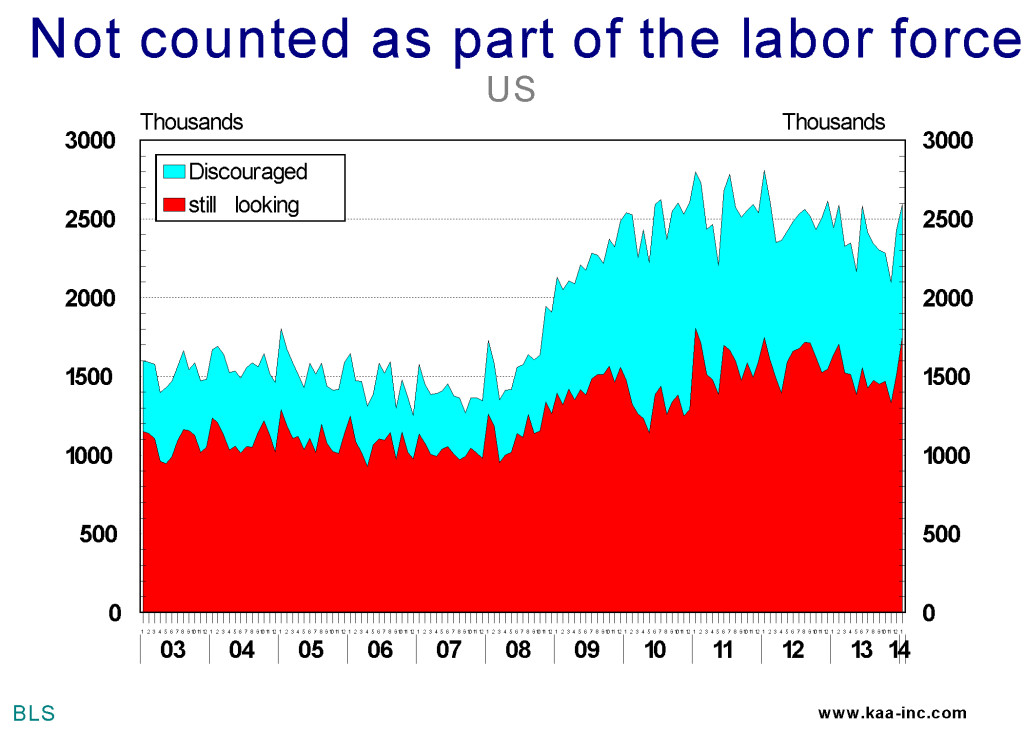What is the real level of unemployment
According to the January 2014 jobs report, there has been 7.8 million jobs created since the depth of the recession, clearly coming up short by approximately 2.3 million new jobs.
As of January there were 10.2 million people who are considered officially unemployed, that is they want a job, and are available and have also actively looked for a job in the last 4 weeks. Out of this 10.2 million, a third of them have been unemployed for more than 27 weeks.
At its worst, there were 6.8 million people who were unemployed for more than half a year. This number has been declining rapidly and as of January 2014 it has been cut to half of what it was at its peak. Still a solid 3.6 million people have been unsuccessfully searching for a job for more than half a year. It should also be noted that for a variety of reasons there are always some unemployment, from people are actually between jobs to those have lost their jobs to technology, changing in markets, etc. For example, even in 2006-07 there were still around 6.5 million people who were counted as unemployed. So when we are looking at the total numbers it is not that we expect unemployment to drop to zero, 6.5 million will do fine!
But this doesn’t paint the real picture of unemployment. During the recession, 8.7 million people lost their jobs, this forced large numbers to accept part-time jobs just to make ends meet. And new comers to the labor market also had a hard time finding full-time jobs. The Bureau of Labor Statistics estimate that there are still 7.3 million people who are “involuntarily” holding part-time jobs.
Obviously since these people work, even if it is only one hour a week, we don’t count them as unemployed. There are always people who are holding part-time jobs while looking for a full time one, during the 2006-07 period there were 4.2 million people who were in this position, accordingly we don’t expect all of these jobs to be translated into full time jobs; if only 3 million of them are upgraded we will be back to the pre-recession times for this category.
Government’s definition of employed is very broad, it is as if it was designed to under estimate total unemployment. Which incidently is not far from the truth. The way it works is that if have done ANY work during the last week, congratulations; you are considered employed! In many cases, you are considered employed if you worked for one hour during the last week even if you were not paid for the work. So it takes some doing to be counted as unemployed! For example, let’s look at the case of 1.8 million people who want and are available to work and had looked for a job but not in the last 4 weeks, they are not considered part of the labor force, so they are not counted as unemployed. It should be noted that this is separate from the case of 837 thousand people who have been discouraged and are not looking for a job. They are also not counted as unemployed.
So, the number of those who are really unemployed goes well beyond those who are officially categorized as unemployed. If we add the number of discouraged workers to those who want a job and are available and have looked for one, but not in the last 4 weeks to the number of people who are working a few hours a week but seriously want a full time job, the total for this group is 10 million people. It should be noted that during the 2006-07 period, there were close to 6 million people in these categories.
The reality is that the total number of unemployed is much larger than the 10.2 million announced by the Bureau of Labor Statistics, the real number is somewhere north of 13 million and it could be as high as 20 million people. However, and equally important we need to recognize that there are always a large number of people in these categories due to structural unemployment and many other reasons. What we are looking for is how far are we off what we used to call NORMAL?
In 2006-07, there were 6 million people in unofficially unemployed categories. There were also another 7 million people who were considered as officially unemployed. So out of the 20 million people who are currently officially and unofficially unemployed, approximately 6 million are carried over from 2006-07. Accordingly, we need to drop unemployment by 7 million people to get back to where we were in 2006-07 period, a herculean task under most circumstances, but almost impossible with the current Congress








